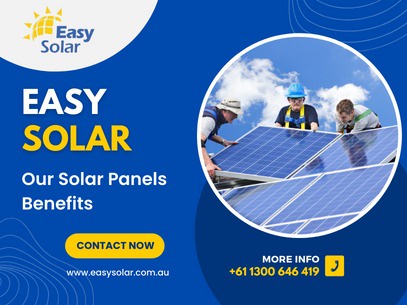Solar energy has become a cornerstone of sustainable living, offering a clean and renewable alternative to traditional energy sources. Installing and maintaining a solar system is an investment in both environmental stewardship and long-term financial savings. In this comprehensive guide, we'll walk you through everything you need to know about installing and maintaining a solar system for your home or business.
Introduction to Solar Systems
Solar systems harness the power of sunlight to generate electricity. They consist of Solar Panels, inverters, mounting hardware, and, in some cases, batteries for energy storage. Solar energy is abundant, clean, and renewable, making it an attractive option for powering homes, businesses, and even entire communities.
Types of Solar Systems
Grid-Tied Systems
Grid-tied solar systems are connected to the local utility grid. They generate electricity during the day, and any excess power is fed back into the grid. These systems are popular for their simplicity and the ability to offset electricity costs.
Off-Grid Systems
Off-grid solar systems are not connected to the utility grid and rely on batteries to store excess energy for use when sunlight is limited. These systems are common in remote areas where access to the grid is unavailable or unreliable.
Installation Process
Site Assessment
Before installing a solar system, a thorough site assessment is necessary to determine factors such as sunlight exposure, shading, and roof orientation. This information helps optimize the placement and performance of solar panels.
Permitting and Paperwork
Obtaining permits and completing necessary paperwork is essential for legal compliance and eligibility for government incentives. This may include building permits, utility interconnection agreements, and documentation for rebates or tax credits.
Panel Mounting
Solar panels are mounted on rooftops or ground-mounted structures using specialized mounting hardware. Proper orientation and tilt angles are crucial for maximizing energy production.
Inverter Installation
Inverters convert the DC electricity generated by solar panels into AC electricity suitable for household use. Inverters are typically installed near the main electrical panel and should be sized to match the capacity of the solar array.
Connection to the Grid (for grid-tied systems)
Grid-tied systems require professional installation by certified electricians to ensure compliance with local electrical codes. Once installed, the system is connected to the utility grid through a bi-directional meter.
Maintenance of Solar Systems
Regular maintenance is essential to ensure optimal performance and longevity of solar systems.
Regular Cleaning
Periodic Cleaning Of Solar Panels is necessary to remove dust, dirt, and debris that can reduce efficiency. This can be done using a soft brush or squeegee and mild detergent.
Monitoring Performance
Monitoring systems allow owners to track the performance of their solar systems in real-time, identifying any issues or inefficiencies promptly.
Inspecting for Damage
Regular inspections should be conducted to check for signs of damage or wear, such as cracked panels or loose wiring. Any issues should be addressed promptly to prevent further damage.
Battery Maintenance (for off-grid systems)
If your solar system includes Solar Battery storage, regular maintenance is necessary to ensure optimal performance. This may include checking electrolyte levels, cleaning terminals, and monitoring charging cycles.
Common Issues and Troubleshooting
Despite their reliability, solar systems may experience occasional issues that require troubleshooting.
Decreased Performance
Factors such as shading or soiling can impact the performance of solar panels. Identifying and addressing the root cause of performance issues is essential to restore optimal energy production.
Inverter Failures
Inverters are critical components of solar systems and may experience failures due to various factors. Inverter failures should be addressed promptly to minimize downtime.
Shading Issues
Shading from trees or nearby structures can significantly impact the performance of solar panels. Proper site assessment and shading analysis during the installation phase can help mitigate shading issues.
Battery Problems
For off-grid systems, battery problems such as sulfation or overcharging may occur over time. Regular maintenance and monitoring can help identify and address battery issues.
Safety Precautions
Working with solar systems requires adherence to strict safety protocols to prevent accidents and injuries.
Electrical Safety
Solar systems involve high-voltage electrical components and should only be installed or serviced by qualified professionals.
Working at Heights
Installation and maintenance work often require working at heights, such as on rooftops or elevated structures. Proper safety measures should be employed to prevent falls and injuries.
Equipment Handling
Handling heavy solar panels and equipment poses risks of strains or crushing injuries. Proper lifting techniques and equipment handling procedures should be followed to ensure safety.
Benefits of Solar Systems
Solar systems offer a range of benefits for both individuals and communities.
Environmental Impact
By reducing reliance on fossil fuels, solar systems help mitigate climate change and air pollution.
Financial Savings
Investing in solar energy can lead to significant long-term savings on utility bills, as well as potential incentives or rebates.
Energy Independence
Solar systems provide a reliable source of energy that is not subject to fluctuating fuel prices or supply disruptions.
Future Trends in Solar Technology
The field of solar technology is constantly evolving, with ongoing research focused on improving efficiency and storage capabilities.
Improvements in Efficiency
Advances in photovoltaic cell design continue to increase the efficiency of solar panels, allowing for greater energy production from smaller footprints.
Energy Storage Innovations
Battery storage technology is advancing rapidly, enhancing the ability to store and utilize solar energy effectively.
Integration with Smart Grids
Smart grid technologies enable more efficient management and distribution of electricity, facilitating seamless integration of solar systems into the broader energy infrastructure.
Conclusion
Installing and maintaining a solar system requires careful planning, execution, and ongoing attention. By following best practices for installation, maintenance, and safety, individuals and businesses can harness the power of the sun to reduce energy costs, lower environmental impact, and achieve greater energy independence.


No comments yet